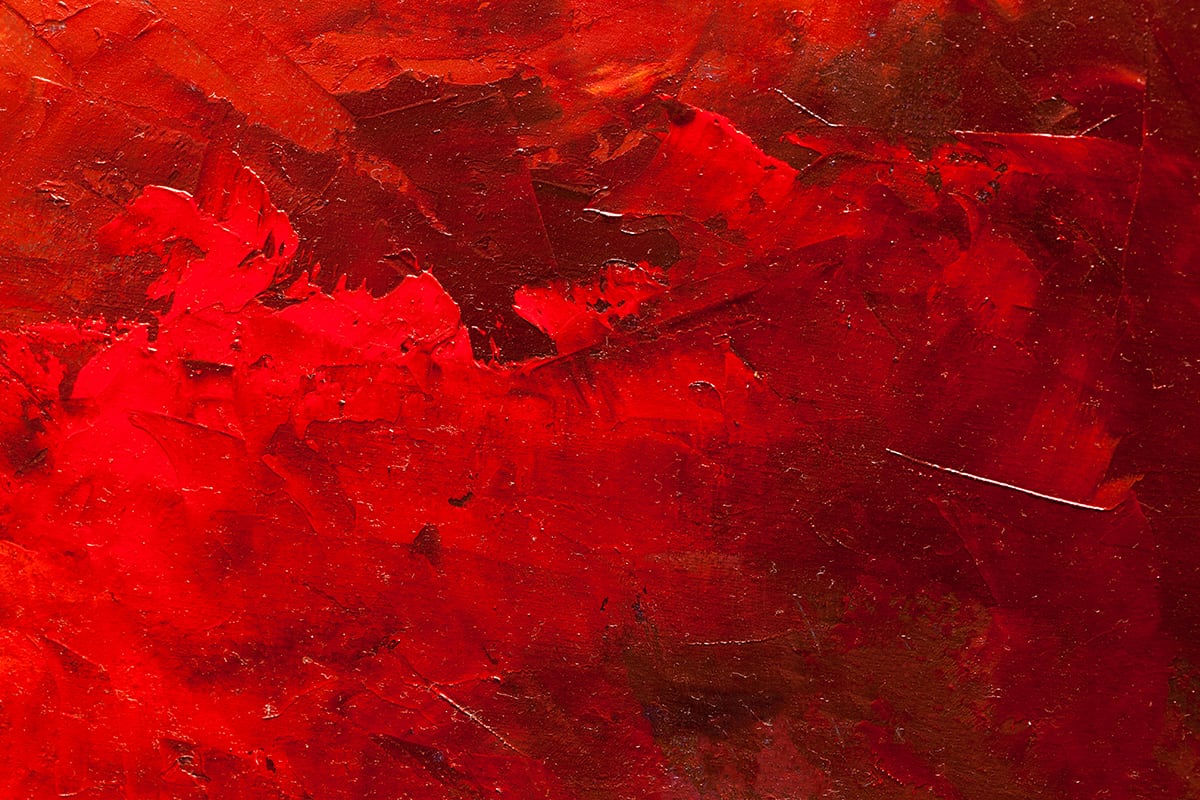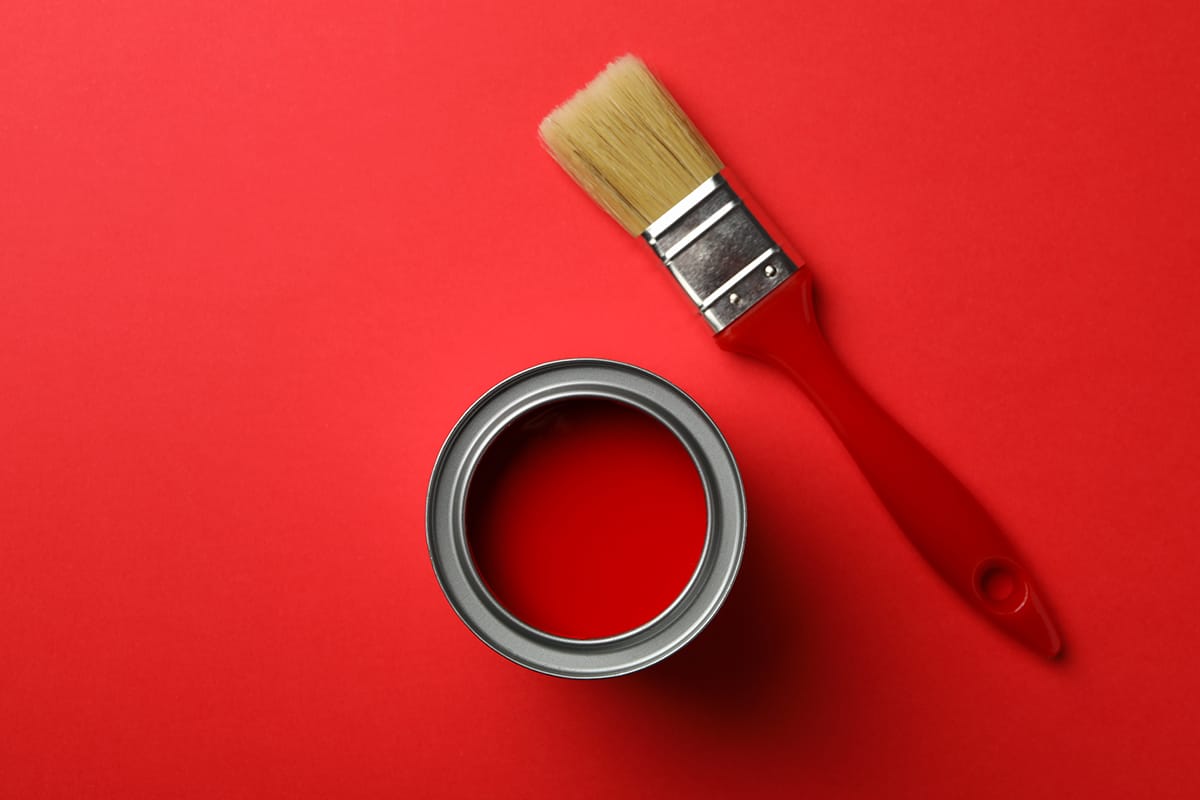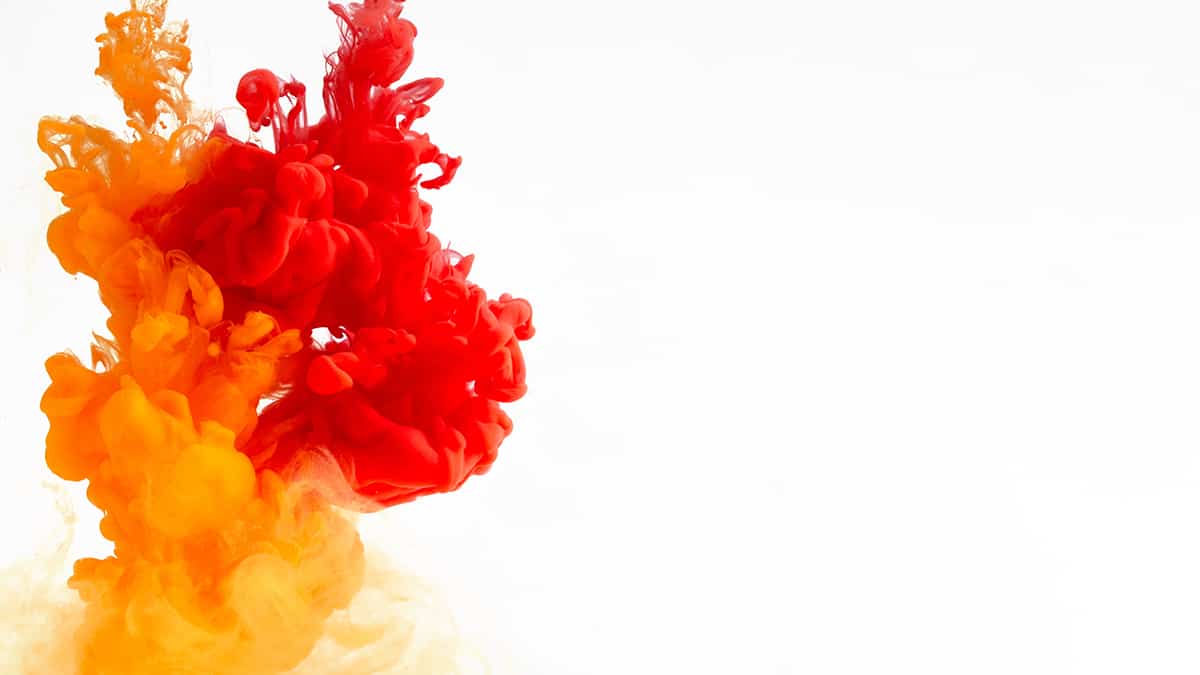Red is one of the most prominent colors on the color wheel because of how bold and vivid it is. It is heavily used in art to make people or objects stand out, though it is lesser used in home decor because of its intensity. Here we explore the psychology of red and look at what colors make red.
Table of Contents
Psychology of Red
Red is a bold color that can bring certain emotions to the surface and influence the atmosphere. When used in home decor, red is usually chosen to make the space feel warm and cozy, but it can also be used to create a romantic room, or it could even be used to create a scary room for Halloween.
The colors that are used alongside red can have a huge effect on whether red comes across as fierce and angry, or warm and inviting. The specific shade of red also plays a key part here, as orange reds appear more feisty, and purple reds are more elegant.
Violence and blood
Red is the color of blood, and as such, it is often used as the primary color for advertising horror movies or scary roller coasters, for example.
Because of its association with blood, red can depict violence and gore. The colors used alongside red will largely dictate whether it comes across as violent or not. When red is used with black it can read as spooky, while if you were to use red with pink then it will have a more romantic effect.
Love and desire
Red is known as the color of love, so it can be used to create a sense of romance, lust, or desire. You’ll notice that red seemingly surrounds us around Valentine’s Day, as it is synonymous with romantic love.
Warning
Red is widely used on signage to indicate danger or to give people a warning. This is because red is a bold and intense color that causes people to pay attention and take it seriously. When used in this way, red can be seen as the color of authority.
Festive
When used with green or gold, red is synonymous with the festive period. It is the most common color that people associate with Christmas, and is used in decorative festive displays, festive outfits, and festive table decor.
How to Make Red Paint
Red is a primary color, so it cannot be made by mixing others together. Just like blue and yellow, the other primary color, red can only be made using pigments.
Although red cannot be made using other colors, it is instead used as the basis to make all other colors. By mixing combinations of blue, red, and yellow together you can make the secondary colors green, orange, and purple.
Color theory teaches us that we can also create tertiary colors by combining combinations of secondary colors, as well as secondary colors with primary colors. For example, you could mix red and orange to make the tertiary color red-orange.
In order to make red paint you would need to first source some red pigment. Throughout history, various different types of pigments have been used to create red paint for use in art and communication.
One of the oldest red pigments known to man is red ochre, which was used on the walls of caves by ancient people to leave messages. Red ochre is a natural mineral that’s been used since prehistoric times, and it’s still used today. Another type of red pigment is the roots of the madder plant.
These would be boiled, mixed with water, and sieved to create dyes and stains for clothing. Madder roots were also used to create paint pigments, as evidenced in two famous paintings by Johannes Vermeer.
Both ‘The Girl With a Wine Glass’ and ‘Christ in the House of Martha and Mary’ feature examples of paints created using red pigment from madder roots in the middle of the 17th century. Another well-known red pigment is cochineal, which is sometimes known as the color carmine.
Cochineal is famously made using tiny scale insects that live as parasites on various types of cacti in South America. The process of making cochineal involves drying the insects and then boiling them in water before mixing the resulting substance with aluminum ions. This forms an intensely vivid scarlet-colored pigment used for both dyes and paints.
Making Different Shades of Red
While you can’t create your own red paint without red pigment, you can create different kinds of red if you have a base red to start with.
Alter the temperature of red
Having a basic understanding of color theory will enable you to transform your red paints into new shades of red. To do this you’ll want to get to grips with the color wheel. The color wheel can be broken into two halves using a line drawn straight down the middle. One half of the wheel features warm temperature colors, and one half of the wheel features cool temperature colors.
The warm temperature colors include shades of red, yellow, and orange, while the cool temperature colors include shades of blue, green, and purple. To alter the shade of red you have, you need to first decide if you want to make it cooler or warmer. To make your red color warmer you’ll want to add a warm color to it; for example, add orange to red to make it more fiery.
To make your red cooler, the opposite is true, and you’ll need to add a hint of cool color to your starting red shade. Cool reds usually lean toward purple, so to make your red slightly cooler, you’ll want to add a few drops of blue.
Make red darker or muted
You can also alter your shade of red by making it darker or more muted. To make any shade of red darker all you need to do is add a drop of black. Be warned that black is an intense and severe paint color, and even the tiniest amount added to your red paint is going to make the red significantly darker.
Because of this, always add drops of black to red using a small amount at a time, mixing them together to view the results before adding any more. Red is known for being a bright and bold shade. However, you can make red more muted by mixing it with its contrasting color. The contrasting shade to red is green, and we know this because they sit opposite each other on the color wheel.
Add a few drops of green to red to tone it down, but do so gradually, as too much green will result in a brown color. You can also make red more muted by adding gray. This will turn red into a more subtle shade without pushing it toward brown.
Make red lighter
Finally, if you want to make your red paint lighter then you’ll need to add white to it. Again, this needs to be done gradually because adding too much white to red will result in pink paint. Contrary to popular belief, using the tiniest amount of white added to red can actually make red appear brighter rather than lighter.
This is because white reflects light, and when only a small amount is included in the red mix, red will seemingly reflect light which creates the effect that it is almost glowing. In order to make red appear lighter, you’ll need to get the balance just right between making it appear brighter and making it look pink.
Making Red using CMYK
Using traditional color theory you cannot make red. However, anyone in the printing industry will know that red can be made using the CMYK color model. This is the color model used in printing and is based on subtractive color theory. CMYK is an acronym that stands for cyan, magenta, yellow, and key.
These are the primary colors used in subtractive color theory, with the ‘K’ or ‘key’ representing black. Just like in traditional color theory, all other colors are created using these primary colors.
To make red using CMYK color theory, you would need to mix magenta and yellow. This is because when magenta and yellow are mixed they cancel out all color wavelengths except for red; therefore, red is the color you are left with using subtractive color theory.
Can You Make Red Using Other Colors?
As we’ve explained above, physical red paint cannot be created using other colors unless you have a red pigment to work with. However, you can create other shades of red using a number of other colors and adding them to your existing red. You can also create red in printing using a CMYK color model by blending magenta and yellow.
This will only work in printing, and cannot be replicated when mixing paints. If you were to mix magenta paint with yellow paint then your resulting paint will be a shade of orange.


